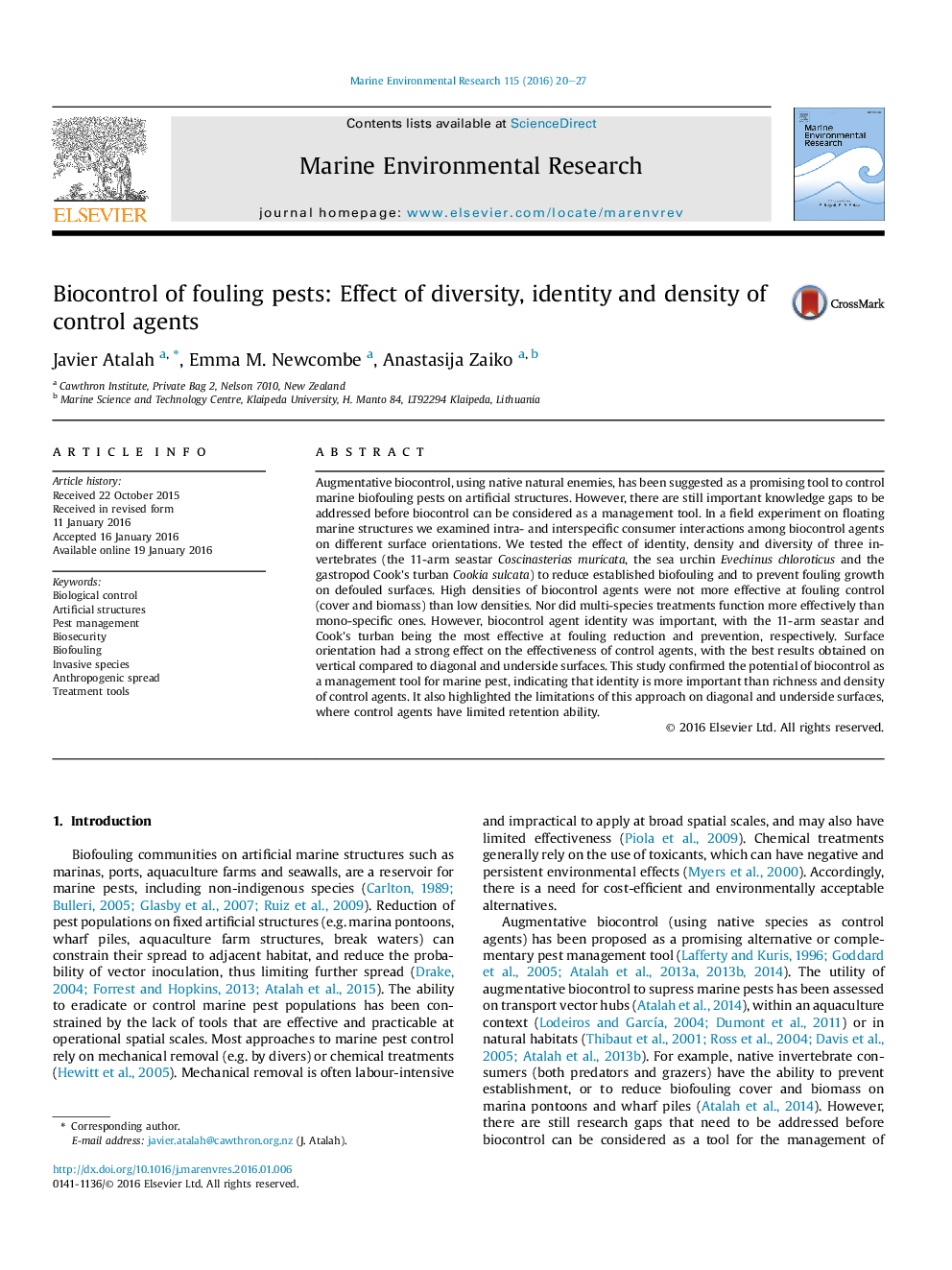| Article ID | Journal | Published Year | Pages | File Type |
|---|---|---|---|---|
| 6387615 | Marine Environmental Research | 2016 | 8 Pages |
Abstract
Augmentative biocontrol, using native natural enemies, has been suggested as a promising tool to control marine biofouling pests on artificial structures. However, there are still important knowledge gaps to be addressed before biocontrol can be considered as a management tool. In a field experiment on floating marine structures we examined intra- and interspecific consumer interactions among biocontrol agents on different surface orientations. We tested the effect of identity, density and diversity of three invertebrates (the 11-arm seastar Coscinasterias muricata, the sea urchin Evechinus chloroticus and the gastropod Cook's turban Cookia sulcata) to reduce established biofouling and to prevent fouling growth on defouled surfaces. High densities of biocontrol agents were not more effective at fouling control (cover and biomass) than low densities. Nor did multi-species treatments function more effectively than mono-specific ones. However, biocontrol agent identity was important, with the 11-arm seastar and Cook's turban being the most effective at fouling reduction and prevention, respectively. Surface orientation had a strong effect on the effectiveness of control agents, with the best results obtained on vertical compared to diagonal and underside surfaces. This study confirmed the potential of biocontrol as a management tool for marine pest, indicating that identity is more important than richness and density of control agents. It also highlighted the limitations of this approach on diagonal and underside surfaces, where control agents have limited retention ability.
Keywords
Related Topics
Physical Sciences and Engineering
Earth and Planetary Sciences
Oceanography
Authors
Javier Atalah, Emma M. Newcombe, Anastasija Zaiko,
